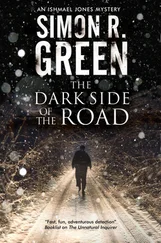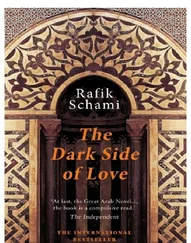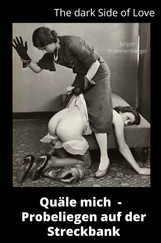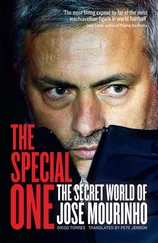As Bobby Kennedy knew, President Kennedy and Sam Giancana shared not only a stolen election and assassination plotting; they also shared a close friendship with a glamorous Los Angeles divorcée and freelance artist named Judith Campbell Exner. Interviews for this book have bolstered the claims of Exner, who first met Kennedy in early 1960, that she was more than just the president’s sex partner, that she carried documents from Jack and Bobby Kennedy to Giancana and his colleagues, along with at least two satchels full of cash. On one train trip from Washington to Chicago she was followed by a presidential advance man named Martin E. Underwood, who told in a 1996 interview of being ordered onto the train by Kenneth O’Donnell, Jack Kennedy’s close aide. “Kenny suggested it might be a good idea,” Underwood told me, “to go to Chicago by train. I said, ‘What train?’ It was the same train Judy took.” He watched, he said, as Exner got off in Chicago and handed a satchel to a waiting Sam Giancana. Exner, in a series of interviews for this book, further admitted that she delivered money, lots of it, from California businessmen directly to the president. The businessmen were bidding on federal contracts.
There was further evidence of financial corruption in Kennedy’s personal files. As the president’s 1964 reelection campaign neared, Kennedy was put on notice by newspaperman Charles Bartlett, his good friend, that campaign contributions were sticking to the hands of some of his political operatives. “No books are kept,” Bartlett wrote the president in July 1963, “everything is cash, and the potential for a rich harvest is clear.… I am fearful that unless you put a personal priority on learning more about what is going on, the thing may slip suddenly beyond your control.”
Robert Kennedy understood, from his own investigations, that there was independent evidence for the Bartlett allegations: one of the attorney general’s political confidants had assembled affidavits showing that money for JFK’s reelection campaign was being diverted for personal use. The Bartlett letters could not be left for Lyndon Johnson.
Yet another group of documents that had to be removed dealt with Jack Kennedy’s health. Kennedy had lied about his health throughout his political career, repeatedly denying that he suffered from Addison’s disease. But as Kennedy and his doctors knew, the Addison’s, which affects the body’s ability to fight infection, was being effectively controlled—and had been since the late 1940s—by cortisone. Far more politically damaging was the fact that the slain president had suffered from venereal disease for more than thirty years, having repeatedly been treated with high doses of antibiotics and repeatedly reinfected because of his continual sexual activity. Those records would be hidden from public view for the next thirty years. There is no evidence he told any of his many partners. Kennedy also was a heavy user of what were euphemistically known as “feel-good” shots—consisting of high dosages of amphetamines—while in the White House. Dr. Max Jacobson, the New York physician who administered the shots, was a regular visitor to the White House and accompanied the president on many foreign trips; his name was all over the official logs. Jacobson and his shots were the source of constant friction between the president’s personal aides and some members of his Secret Service detail, who persistently tried to keep the doctor, and his amphetamines, away from the White House. Jacobson’s license to practice medicine was revoked in 1975.
Jack and Bobby Kennedy were even tougher than their most ardent admirers could imagine. They seemed to glide unerringly through the nearly three years of his presidency, with its constant domestic and foreign crises. But in reality they lived and worked on the edge of an abyss. The brothers understood, as the public did not, that they were just one news story away from cataclysmic political scandal.
How to keep secrets and carry on their activities was something they had learned from their father, a successful financier and controversial public official, who masked how much money he had and how he earned it, and from their maternal grandfather, John Francis “Honey Fitz” Fitzgerald, a corrupt Boston politician who simply ignored the unpleasant realities of his public life. Jack and Bobby Kennedy also learned from their father and grandfather that—as Kennedys—they could enjoy freedoms denied to other men; the consequences of their acts were for others to worry about.
The family’s main antagonist was J. Edgar Hoover, director of the Federal Bureau of Investigation, who knew and was eager to take advantage—so the family was convinced—of the darkest Kennedy secrets, including the fact of Jack’s marriage to Durie Malcolm. Hoover’s biographers have told in compelling detail of Hoover’s ability to collect damaging political and personal information about the men in the White House and use it as a weapon. The relentless FBI director had been keeping score on the Kennedys, father and sons, since the early 1940s and was appalled by their public and private excesses. But the Kennedys understood that Hoover, for all of his moralizing, was a firm believer in the institution of the presidency, and could be counted on in moments of crisis, even those involving angry women looking for a way to make trouble for the president.
Hoover’s reappointment as FBI director was Jack Kennedy’s first announcement as president-elect.
Jack Kennedy’s embarrassing files were not the only materials removed from the White House on November 22. While Air Force One was still in the air, a senior Secret Service agent named Robert I. Bouck began disassembling yet another of the Kennedy brothers’ deep secrets—Tandberg tape-recording systems in the Oval Office, Cabinet Room, and the president’s living quarters on the second floor of the White House. There was also a separate Dictabelt recording system for use on the telephone lines in the president’s office and his upstairs bedroom. In the summer of 1962, John Kennedy had summoned Bouck and instructed him to install the devices and be responsible for changing the tapes. Apparently Bouck told only two people of the system—his immediate superior, James J. Rowley, chief of the Secret Service, and a subordinate who helped him monitor the equipment. It was Bouck’s understanding that only two others knew of the system while JFK was alive—Bobby Kennedy and Evelyn Lincoln, the president’s longtime personal secretary.
The seemingly open and straightforward young president could activate the recording system when he chose, through a series of hidden switches that Bouck installed in the Oval Office and on the president’s desk. “His desk had a block with two or three pens in it and a place for paper clips,” Bouck said in a 1995 interview for this book. “I rigged one of those pen sockets so he could touch a gold button—it was very sensitive—and switch it [the tape recorder] on.” Another secret switch was placed in a bookend that the president could reach while lounging in his chair. “All he had to do was lean on it,” Bouck told me. A third was tucked away on a small table in front of the Oval Office desk, where Kennedy often met with aides and visitors. (Bouck would say of the tabletop switch only that it was placed “under something that was unlikely to be taken away.”) Microphones were also hidden in the walls of the Cabinet Room and on the desk and coffee table in the president’s office. Kennedy made little use of the devices in the family living quarters, Bouck said. The president could record telephone conversations by flicking a switch on his desk that activated a light in Evelyn Lincoln’s office, alerting her to turn on the Dictabelt system. During its sixteen months of operation, Bouck said, the taping system produced “at least two hundred” reels of tapes. “They never told me why they wanted the tapes,” Bouck said, “and I never had possession of any of the used tapes.”
Читать дальше












